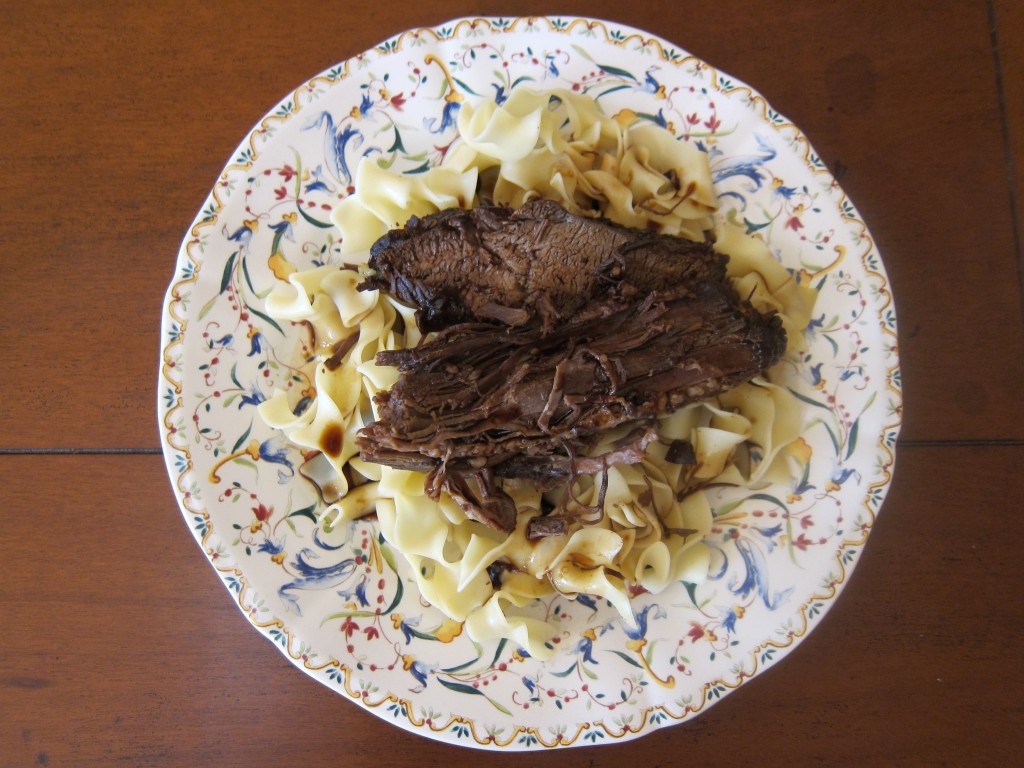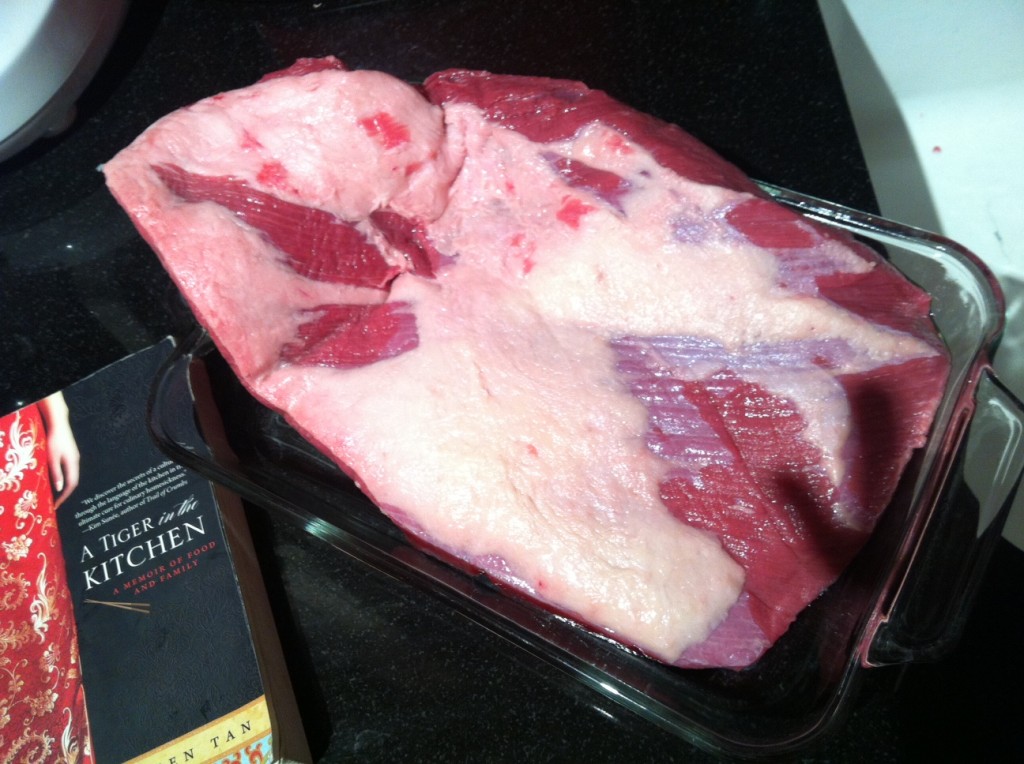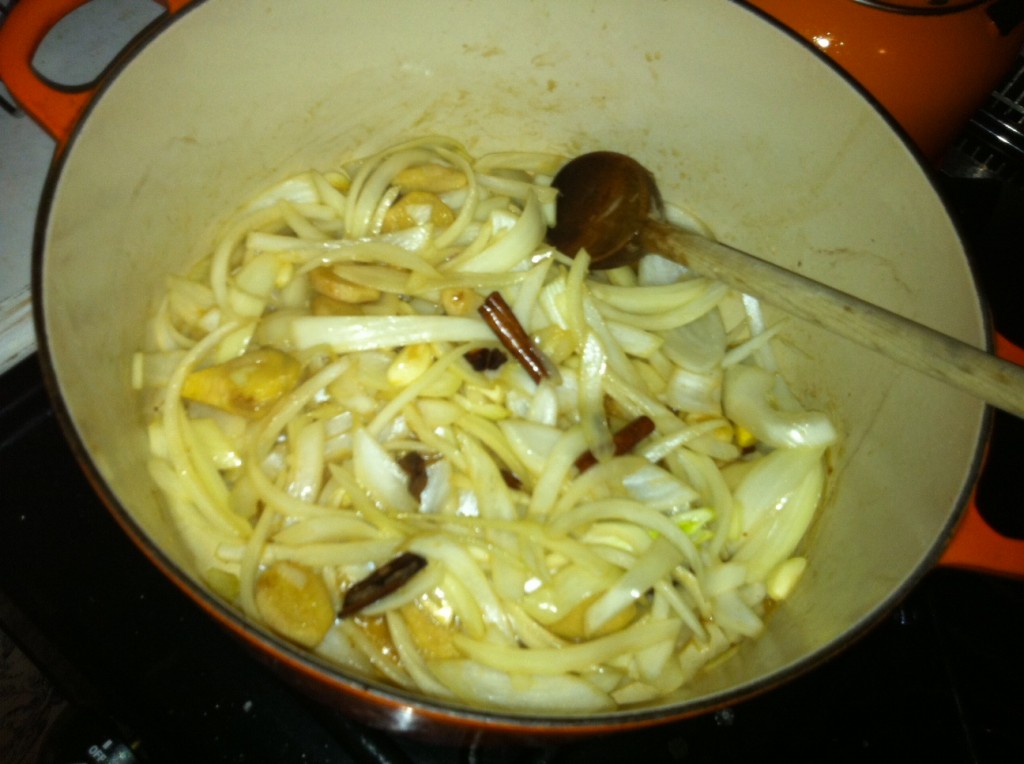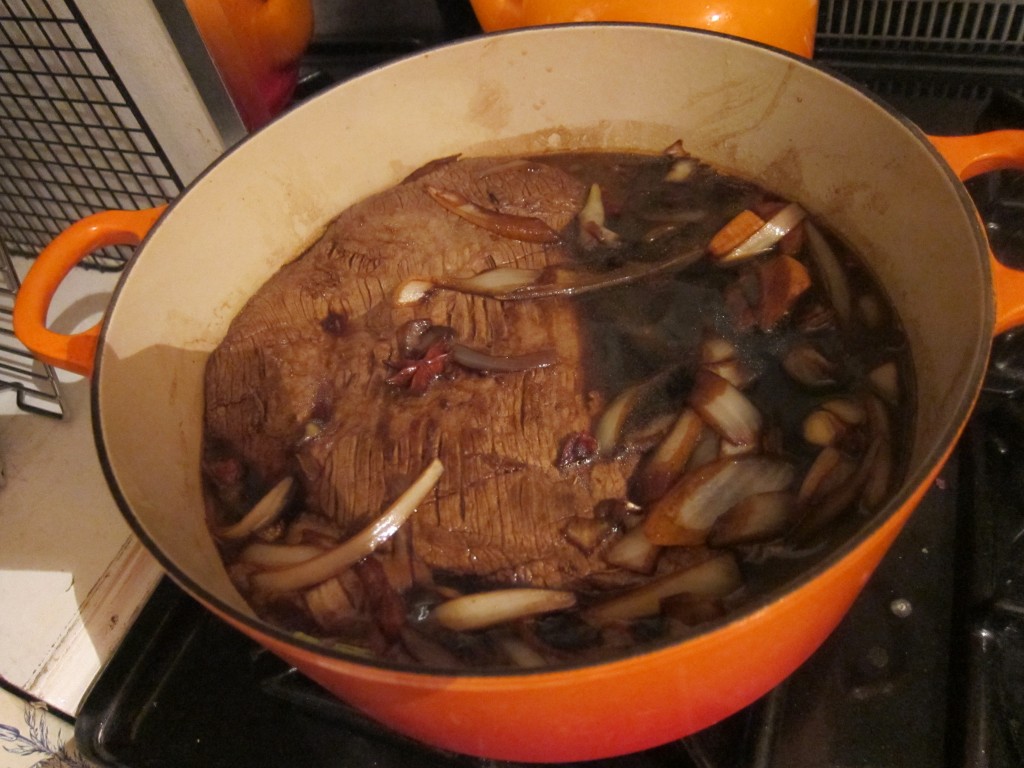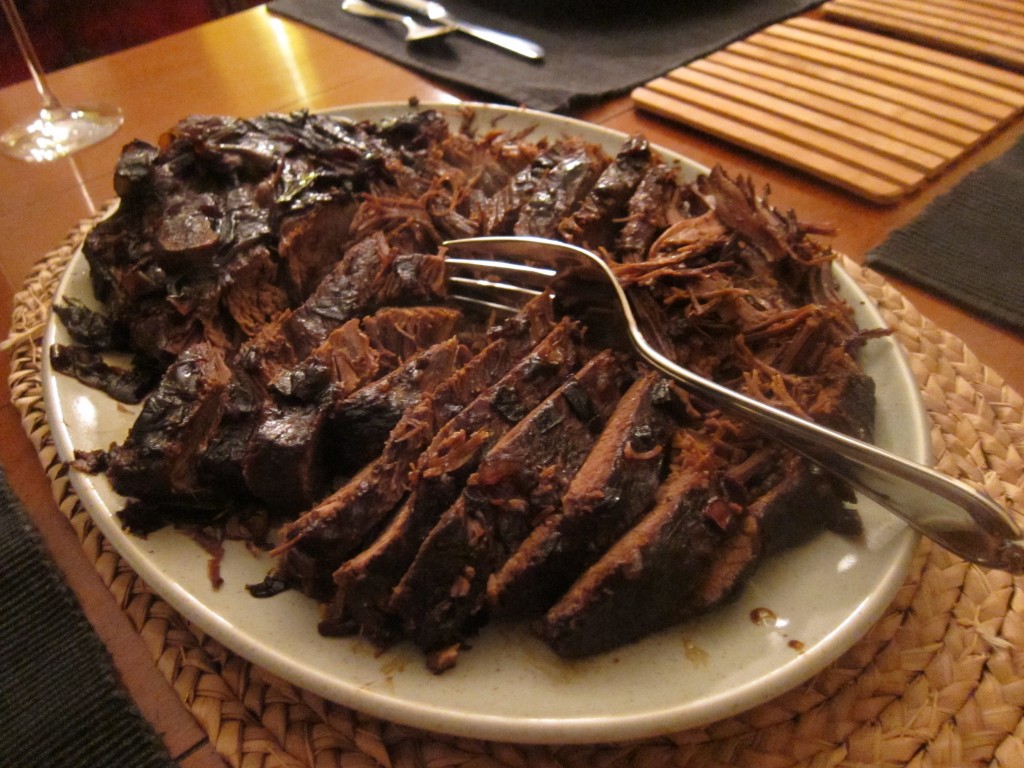Sometimes, one just needs a good muse to get the juices flowing.
In my case, that would be a certain brisket I spied recently once the cut of meat began flooding butchers with Passover on the horizon. Now this was a beautiful five-pounder with an impressive girth, hearty red hue and slick coating of fat. Thoughts of what I might do to it washed over me instantly — something conventional, perhaps? Or a return to the trusty sweet and sour brisket recipe I’ve hauled out time and again? And then I thought of my Auntie Alice’s Singapore-style braised duck recipe and how unforgettable that soy sauce gravy inflected with ginger, garlic and five spice powder is.
In recent weeks, I’ve spoken often of how one shouldn’t be intimidated by Southeast Asian recipes — yes, it’s a less usual form of cooking than you would see in most American kitchens. The ingredient lists can be long and the sometimes numerous steps can be mind-boggling. But if you love the flavors, try to understand and dissect them, I’ve been saying in book appearances and interviews — and then adapt those techniques and spice strategies to everyday dishes in your own kitchen.
Faced with my brisket, I thought perhaps I should heed my own advice. My auntie’s braising strategy works wonderfully on duck — so why not beef? Armed with a bagful of garlic, ginger and an onion, I was ready to give it a shot …
First, I gently washed said brisket and consulted A Tiger in the Kitchen, where my auntie’s braised duck recipe appears. It’s been a while since I made the dish, duck not being the most convenient thing to make for a regular dinner, especially when one is swamped with a book tour.
Then, I rubbed the brisket with a mixture of salt and five-spice powder, letting that marinate in the fridge for two hours.
When that was done, the brisket went into a pot for some browning. When that was done, I melted sugar in the pan juices, letting it get a little brown and caramelized before adding 15 bashed cloves of garlic and 15 hunks of ginger. (I couldn’t find galangal or blue ginger — which Auntie Alice prefers — in Brooklyn so ginger it was.) After that mixture became fragrant, in went a large sliced onion, which then got stir-fried until the onions were soft.
At this point, I also tossed in a cinnamon stick that had been broken in half and some whole star anise for added flavor. After discovering — via the TV show House, of all things, in an episode in which Doctor House starts cooking, and then Fat Duck chef Heston Blumenthal — that star anise reacts with the sulfur compounds in onions to intensify the flavor of the beef, I’ve often added the spice to beef dishes to liven up the flavors. (You’ll have to read about the 12 hours I spent slaving over Blumenthal’s bolognese, which employs this strategy.)
After the onions softened, the brisket went back in along with a Chinese rice bowl-full of dark soy sauce — a sauce which has the consistency of molasses — and a few cups of vegetable broth, only because that, and not beef broth, was what I happened to have on hand.
And when that concoction started boiling, I covered the pot and stuck it in the oven for three hours.
After which … the brisket came out looking just gorgeous. Note the caramelized coating of onions and soy sauce on the left in this picture.
Sliced up and paired with egg noodles with generous gobs of the salty, spicy gravy poured on top of it, the dish was just divine. The beef was falling apart tender and infused with the heady soy sauce, star anise, ginger and garlic flavors of a traditional Singaporean Chinese kitchen.
To test the experiment, I’d invited Chef Simpson to come over for a taste. And taste he did — as I watched, he devoured helping after helping of it, reaching back for more pinches of meat on the platter long after we’d begun contemplating dessert. “Super delicious and addictive,” was his verdict, as he added that he wanted “to bathe in the sauce.”
Amid the euphoria over my Singaporean-braised brisket success, Simpson and I began discussing more brisket strategies — would it work with a spicy red Malay curry we both love? What about a coconut-based gravy? There must be something Korean we can do with brisket. The possibilities were just endless.
“We should do a Brisket 100 Ways cookbook,” Simpson said.
Which sounds like a book I would love to own but a terribly massive undertaking. In the meantime, plotting our next brisket experiment is already underway. Stay tuned for the next installment…
~~~
Cheryl’s Teochew-Style Soy Sauce Braised Brisket
(Somewhat adapted from Auntie Alice’s Braised Duck Recipe in A TIGER IN THE KITCHEN: A Memoir of Food and Family)
1 large onion, sliced
2 level Chinese soup spoons (each about 1 1/2 to 2 tablespoons) five-spice powder
2 level Chinese soup spoons salt
2 level Chinese soup spoons sugar
15 slices of peeled blue ginger/galangal (available at Asian markets; regular ginger can be substituted)
15 cloves of garlic, peeled and lightly bashed
1 Chinese rice bowl (slightly over one cup) dark soy sauce, or more to taste (look for it in Asian markets)
2 cups of vegetable or beef broth or water (Use more if you would like more sauce)
5 whole star anise
1 cinnamon stick, broken in half
2 tablespoons olive oil
Directions
Preheat oven to 350°F. Combine dark soy sauce and broth or water and set aside.
Wash brisket, then mix together the five-spice powder and salt and rub it all over the meat. Let the brisket marinate, covered, for at least 2 hours in the refrigerator.
Take brisket out of refrigerator and very lightly rinse it. Heat a large Dutch Oven over low heat and add the olive oil. When the oil is hot, add brisket, browning on both sides. (About five minutes on each side.) Transfer brisket to a plate. Add sugar to the pot and stir it briskly until it melts, turning slightly brown and caramelized. Then add garlic and galangal or ginger to the pot and stir fry the mixture until it is fragrant and the pieces of garlic and ginger are turning brown. Add sliced onions, cinnamon and star anise to the mixture and sauté until the onions have softened, about eight minutes.
Add soy sauce and broth mixture to the pot and stir it all together well before adding the brisket to the mixture, turning it over to make sure it’s well coated. Bring the liquid back to a boil, cover pot tightly and transfer to the oven, baking until the brisket is tender, about three hours.
Remove pot from oven, letting brisket rest for half an hour before slicing. Serve over noodles or with potatoes on the side.
